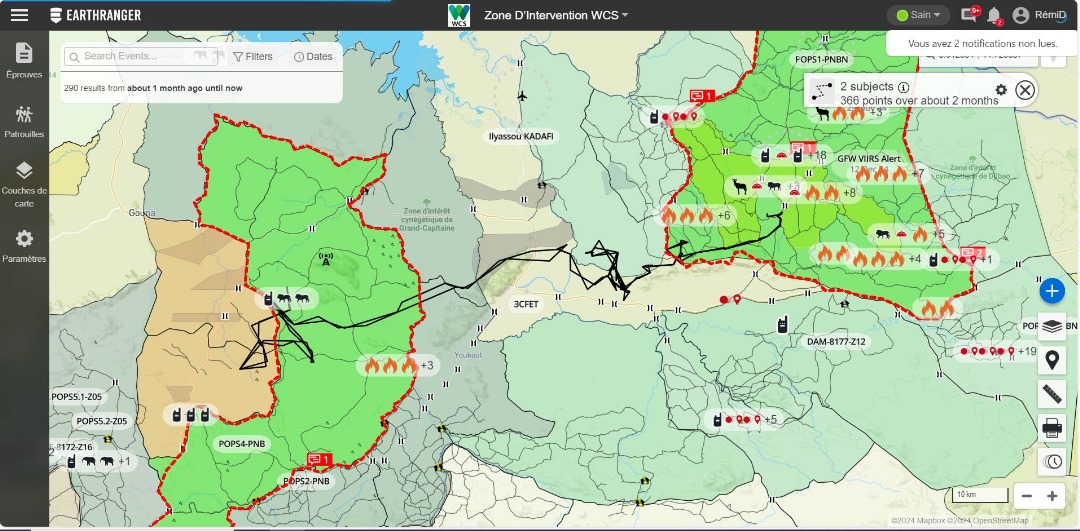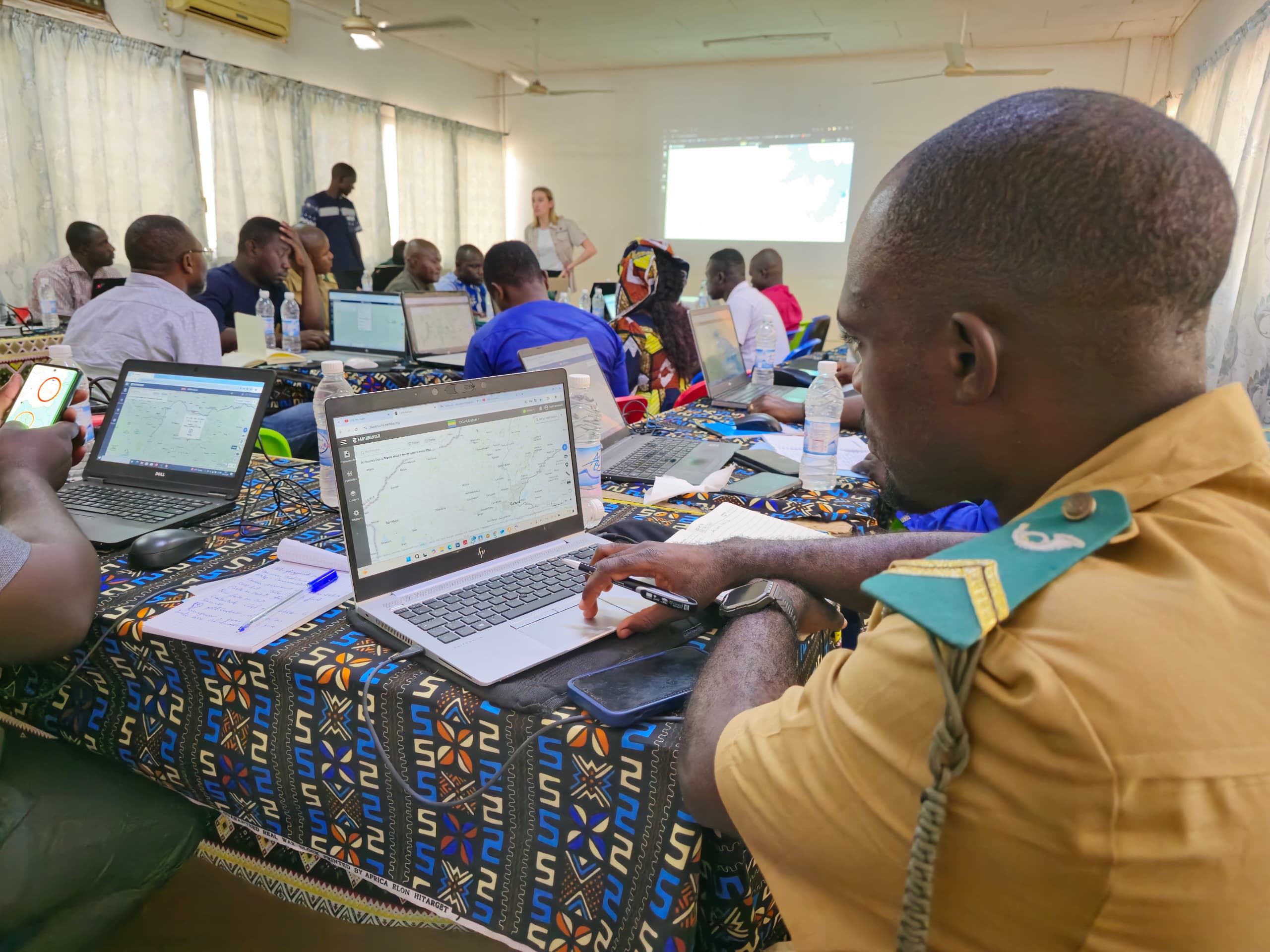From Conflict to Coexistence: Tracking Lions Across Landscapes with EarthRanger
Wildlife species inherently traverse landscapes without regard for political boundaries, prompting the need for conservation strategies that can transcend Protected Area borders.
In Central Africa, the Bouba Ndjidda National Park in Cameroon and the Sena Oura National Park in Chad together form the Binational Sena Oura–Bouba Ndjidda (BSB Yamoussa) Complex. Financed by the German Cooperation through KfW, this network is a refuge to emblematic species like the savannah elephant, giraffes, buffalo, Derby eland – and critically, lions. As apex predators and ecological keystone species, lions play a vital role in maintaining the balance of this rich ecosystem. But protecting them requires more than isolated efforts; it demands collaboration, real-time intelligence, and community trust.

For over two decades, the Wildlife Conservation Society (WCS) has worked hand in hand with local communities and government authorities, leading science-based strategies to preserve biodiversity in this (and many other) critical ecosystems. And now, with EarthRanger integrated into daily operations, WCS’s conservation strategies are advancing further, faster. The platform supports anti-poaching teams, ecological monitors, and park managers with real-time data to coordinate patrols, respond to threats, and track wildlife movements. Importantly, EarthRanger’s compatibility with tools like SMART ensures that teams can build on what they already know while gaining a more complete picture of what’s happening in the field.
Lions on the Move: A Success Story in Real-Time Protection
In late 2024, two GPS-collared male lions began a remarkable 53-day journey within Cameroon, moving from Bouba Ndjidda National Park into Benoue National Park. Along the way, they crossed community lands, livestock grazing zones, and multiple Hunting Interest Zones (ZICs), raising fears of human-wildlife conflict.

Through the EarthRanger platform, WCS and partner teams were ready. With geofences and real-time tracking of the collared lions, conservationists were able to anticipate the lions’ movements, identify when they had moved out of the protected area, and determine if any villages were at risk. With the ability to estimate when and where the lions would reach a village, the team took swift and preventive action. As the alerts came in, the biomonitoring team would issue early warning messages to the relevant communities, schools, markets, and health care centers, alerting them to the location of the lion(s). Posters were distributed with safety protocols to reduce risk to both people and lions, laying the groundwork for trust and collaboration.
This proactive outreach transformed a potential crisis into an opportunity for cooperation. Instead of escalating fear or retaliation, communities became partners. Livestock losses were minimized. Conflict was avoided. And most powerfully, local people stepped up to help—volunteering to monitor lion movements, share information, and keep the animals safe.
EarthRanger also helped empower high-ranking anti-poaching personnel with real-time access to field data, reducing response times and increasing operational precision. For the first time, conservation teams could observe lions crossing from one national park to another—and then into a third area—while minimizing the risks to both people and wildlife.
In March 2025, with the support of partners such as GIZ, AWF, ACFCAM, and the EU’s NaturAfrica initiative, WCS led a training session at the Garoua Wildlife School that brought together protected area managers from across Cameroon. These new EarthRanger Champions are now equipped to scale the platform’s impact across the BSB complex - Benoue and Faro National Park —and beyond.

We’re honored to be part of WCS’s work in Cameroon, where innovation, collaboration, and resilience are not just protecting lions, but shaping the future of an entire transboundary ecosystem. From preventing conflict to empowering local communities, WCS is showing what’s possible when science, technology, and trust come together.
Because of their efforts, coexistence isn’t just a goal—it’s becoming a reality.
Related Posts
Central African Republic
Democratic Republic of Congo
